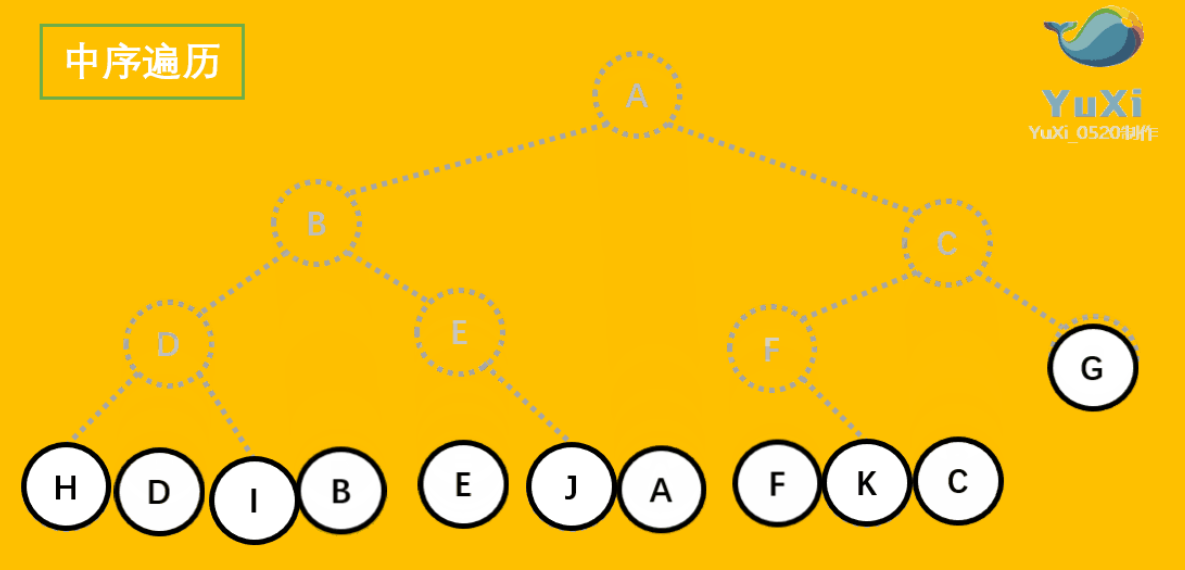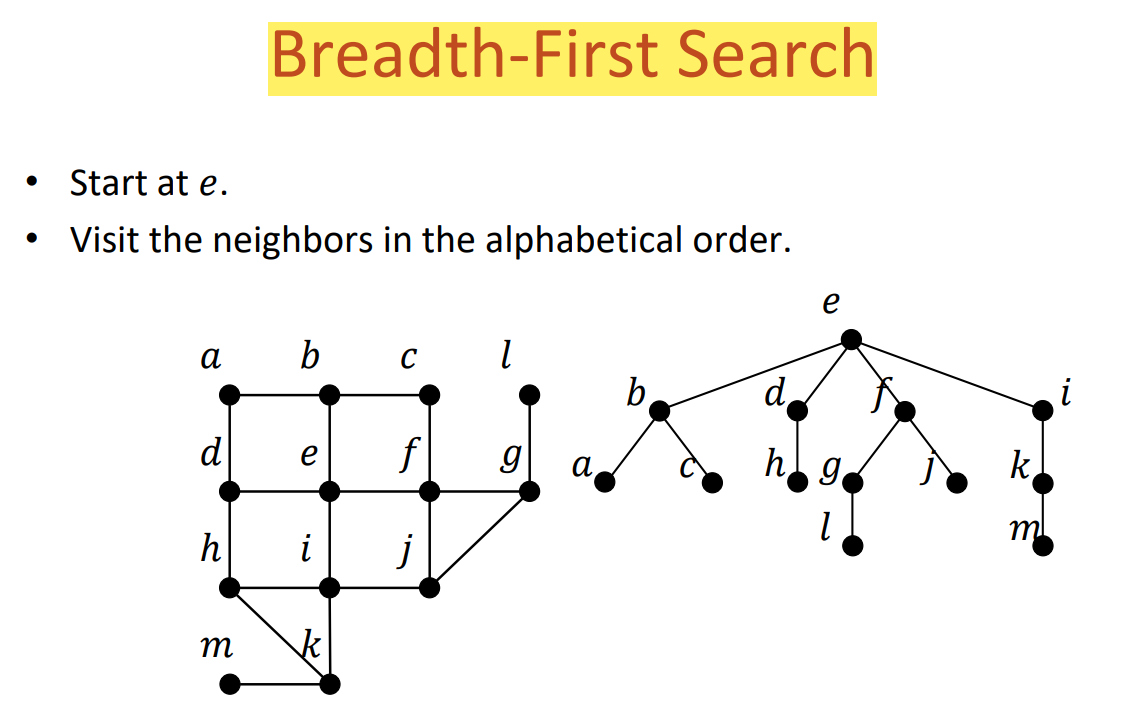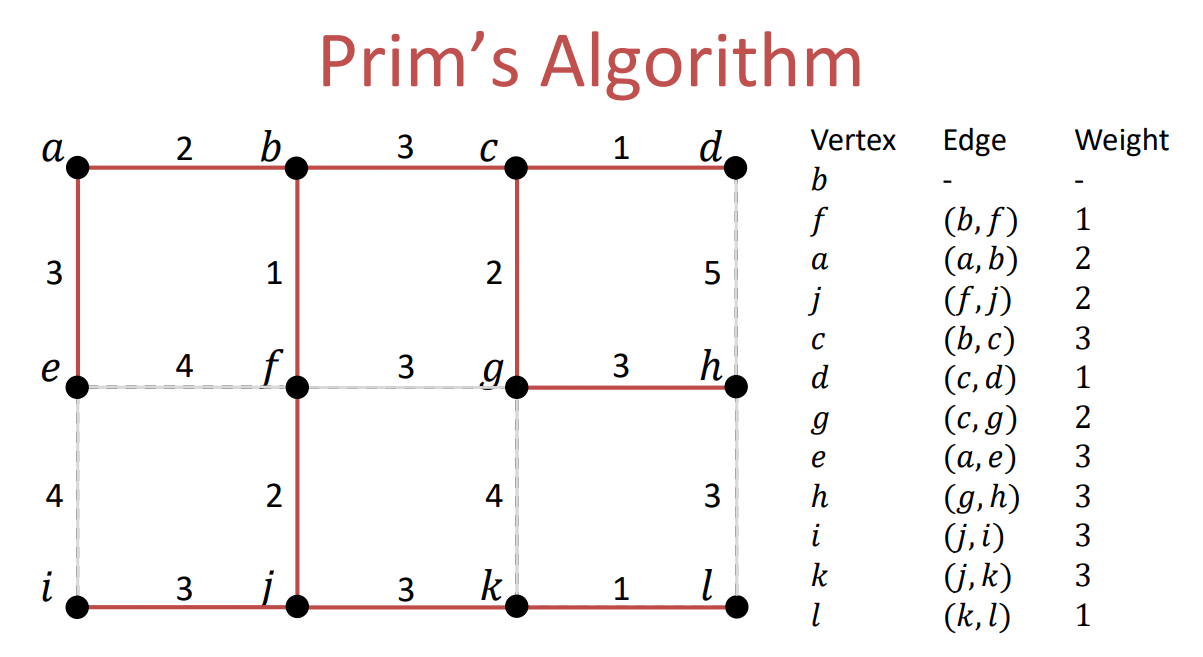date: 2024-01-16
title: tree
status: DONE
author:
- AllenYGY
tags:
- Tree
- DiscreteStructure
- Lec13
- NOTE
created: 2024-01-16T21:03
updated: 2024-04-08T22:11
publish: TrueTree
- A tree is a connected undirected simple graph that contains no simple circuits.
Rooted Trees
- A rooted tree is a tree in which one node has been designated the root.
- Every edge is directed away from the root.
- Given a vertex 𝑣 in a rooted tree 𝑇:
- Parent: unique vertex 𝑢 such that (𝑢, 𝑣) is an edge (in the direction from root to 𝑣)
- Child: any vertex for which 𝑣 is a parent
- Siblings : vertices with the same parent
- Ancestors : all vertices from root to 𝑣 (except itself)
- Descendants : vertices with 𝑣 as an ancestors
- A vertex of a tree is called a leaf if it has no children.
- Vertices that have children are called internal vertices.
Rooted Trees(有根树)是一种基础的数据结构,它由若干个节点和连接这些节点的边组成。它们通常用于表示层次结构,例如文件系统、网站导航、家谱等。根据定义,每个树都有一个根节点,它是唯一的,并且没有父节点。每个节点可以有零个或多个子节点,每个子节点都连接到其父节点。树的节点可以表示任何对象,可以是简单的值(例如数字或字符串),也可以是更复杂的对象或数据结构。节点可以具有任意数量的子节点,但每个节点最多只能有一个父节点。
Game Trees
- A Game (State) Tree models the different possible outcomes in a game.
- Vertices: positions (states) in a game.
- Edges: legal moves from one position (state) to another.
- Leaves: Final positions (states) of a game.
- eg: Tic-Tac-Toe
m-ary Trees
- A rooted tree is called 𝑚-ary if every internal vertex has no more than 𝑚 children (maximum is 𝑚).
- It is called full if every internal (non-leaf) vertex has exactly 𝑚 children.
- A 2-ary tree is called a binary tree. If 𝑣 is an internal vertex of a binary tree, it has at most two children. The first we call the left child and the second the right child.
- If vertex 𝑣 is in a tree 𝑇, the sub-tree with root 𝑣 is the tree consisting of 𝑣 and all its descendants.
m-ary Tree是一种树形数据结构,它的每个节点最多有m个子节点。m通常被称为树的度。当m=2时,m-ary Tree就是二叉树;当m=3时,m-ary Tree就是三叉树。m-ary Tree常用于计算机科学中的搜索和排序算法,例如B树和B+树,它们被广泛应用于数据库和文件系统的实现中。在m-ary Tree中,节点的度数可以任意,而不像二叉树那样只能是2,因此m-ary Tree可以更灵活地表达数据结构和算法的特点。
Balanced Tree
The level of a node is the length of the path from the root to the node (The level of the root is defined to be zero).
- The height of a tree is maximum level of node.
- A rooted m-ary tree with height ℎ is called balanced if all leaves are at levels ℎ or ℎ − 1.
Tree Traversal
- Rooted trees are used to store information.
- We often need to do some operation on the vertices in such a tree.
- A tree traversal (遍历) is an algorithm designed to “visit” each node in the tree.
- Traversal Algorithms
- Pre-order traversal
- In-order traversal
- Post-order traversal
Pre-order Traversal
- 先序遍历可以想象为,一个小人从一棵二叉树根节点为起点,沿着二叉树外沿,逆时针走一圈回到根节点,路上遇到的元素顺序,就是先序遍历的结果

In-order Traversal
- 中序遍历可以看成,二叉树每个节点,垂直方向投影下来(可以理解为每个节点从最左边开始垂直掉到地上),然后从左往右数,得出的结果便是中序遍历的结果

Post-order Traversal
- 后序遍历就像是剪葡萄,我们要把一串葡萄剪成一颗一颗的。
还记得我上面提到先序遍历绕圈的路线么?(不记得翻上面理解)
就是围着树的外围绕一圈,如果发现一剪刀就能剪下的葡萄(必须是一颗葡萄)(也就是葡萄要一个一个掉下来,不能一口气掉超过1个这样),就把它剪下来,组成的就是后序遍历了。

Spanning Trees
- A spanning tree of a connected undirected graph 𝐺 is a subgraph of 𝐺 that contains all of 𝐺’s vertices and enough of its edges to form a tree.
- To obtain a spanning tree from a connected undirected graph with cycles.
- Remove edges until there are no cycles.
- There are two algorithms for constructing spanning trees.
- Depth-First Search (Back-tracking)
- Breadth-First Search
Depth-First Search (DFS)
-
Depth-First Search (DFS) proceeds along a path from a vertex 𝑣 as deeply into the graph as possible before backing up (back tracking).
-
To create a depth-first search (DFS) spanning tree
-
Traverse the graph using a depth-first search and mark the edges that you follow.
-
After the traversal is complete, the graph’s vertices and marked edges form the spanning tree.
-

Breadth-First Search(BFS)
- Breadth-First Search (BFS) visits every vertex adjacent to a vertex v that it can before visiting any other vertex.
- To create a breath-first search (BFS) spanning tree
- Traverse the graph using a bread-first search and mark the edges that you follow.
- When the traversal is complete, the graph’s vertices and marked edges form the spanning tree.

Minimum Spanning Trees
- A minimum spanning tree in a connected weighted graph is a spanning tree that has the smallest possible sum of weights of edges.
- There may be several different minimum spanning trees for a particular graph. But the minimum weight is unique.
Prim’s Algorithm
-
Initially, starts from an empty (no vertices, no edges) sub minimum spanning tree 𝑇.
-
Randomly put a vertex 𝑣 into 𝑇.
-
Among all the edges (𝑢, 𝑠) such that 𝑢 is in 𝑇 and 𝑠 is not in 𝑇, find the one of the minimum weight. And add the edge and the endpoint to 𝑇.
-
Repeat Step 3 for 𝑛 − 1 iterations (because a tree has 𝑛 − 1 edges).

Kruskal’s Algorithm
-
Initially, starts from a subgraph of all vertices but no edges.
-
Find the edge with the smallest weight.
-
If adding the smallest edge to the subgraph does not create any cycle, add it. (To maintain the tree property.)
-
Otherwise, this edge is not in the MST. So, discard the edge.
-
Repeat steps 2-4 until for 𝑛 − 1 iterations (because a tree has 𝑛 − 1 edges).
